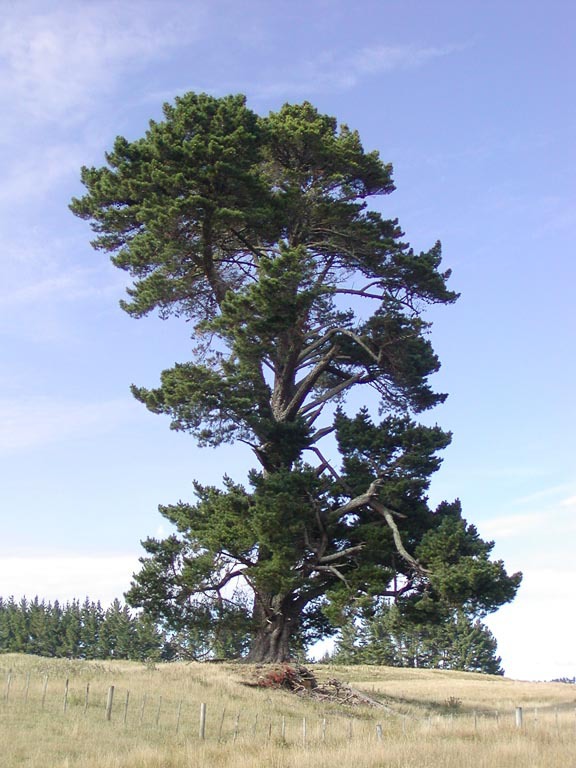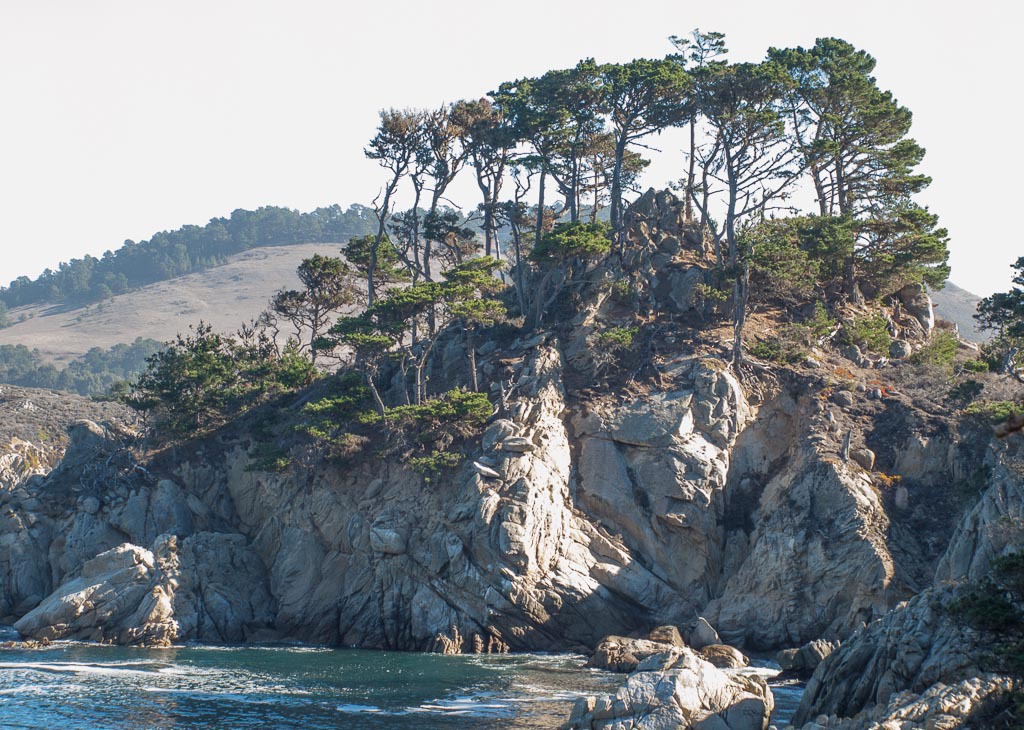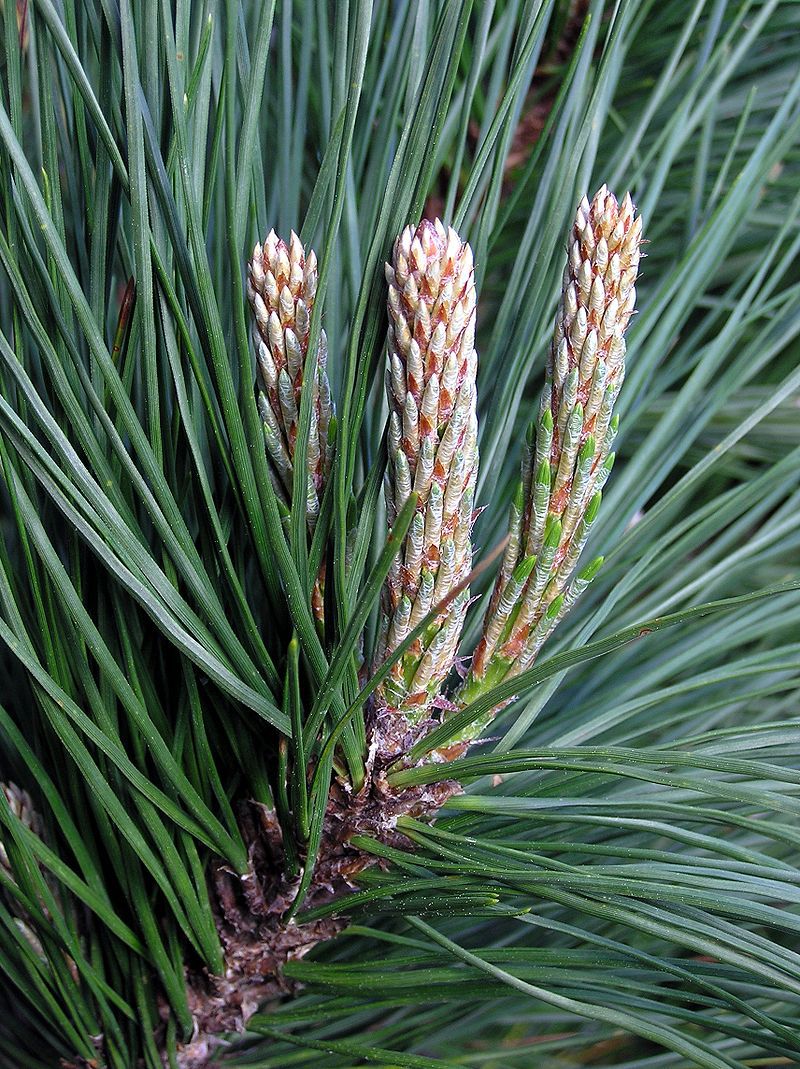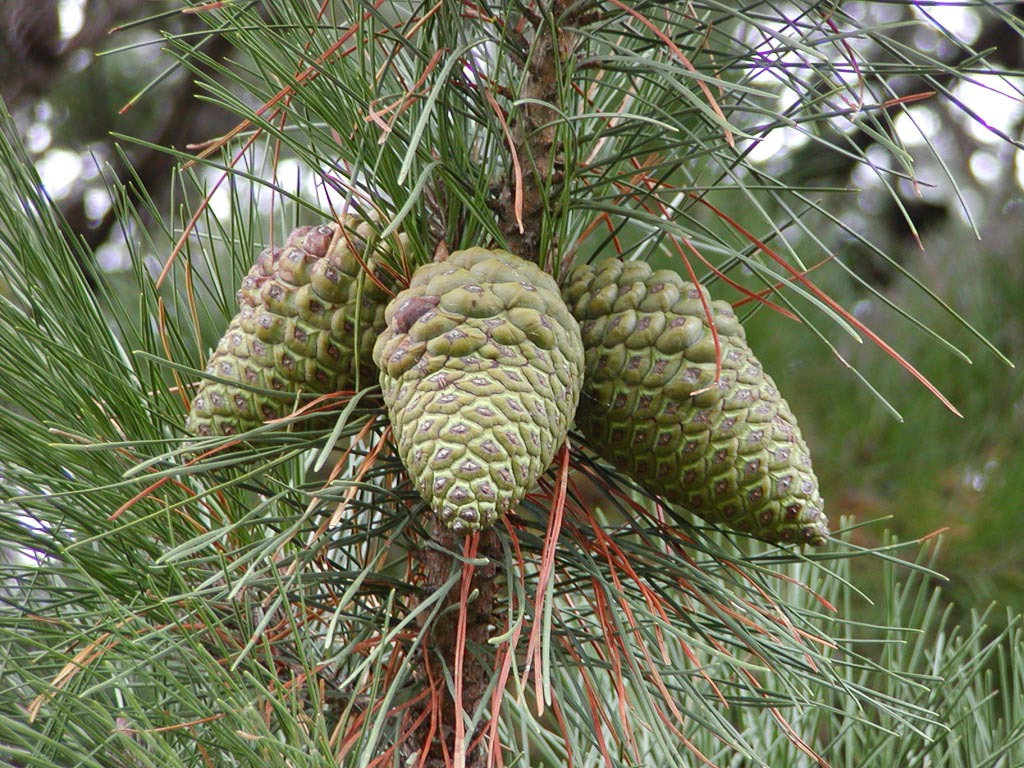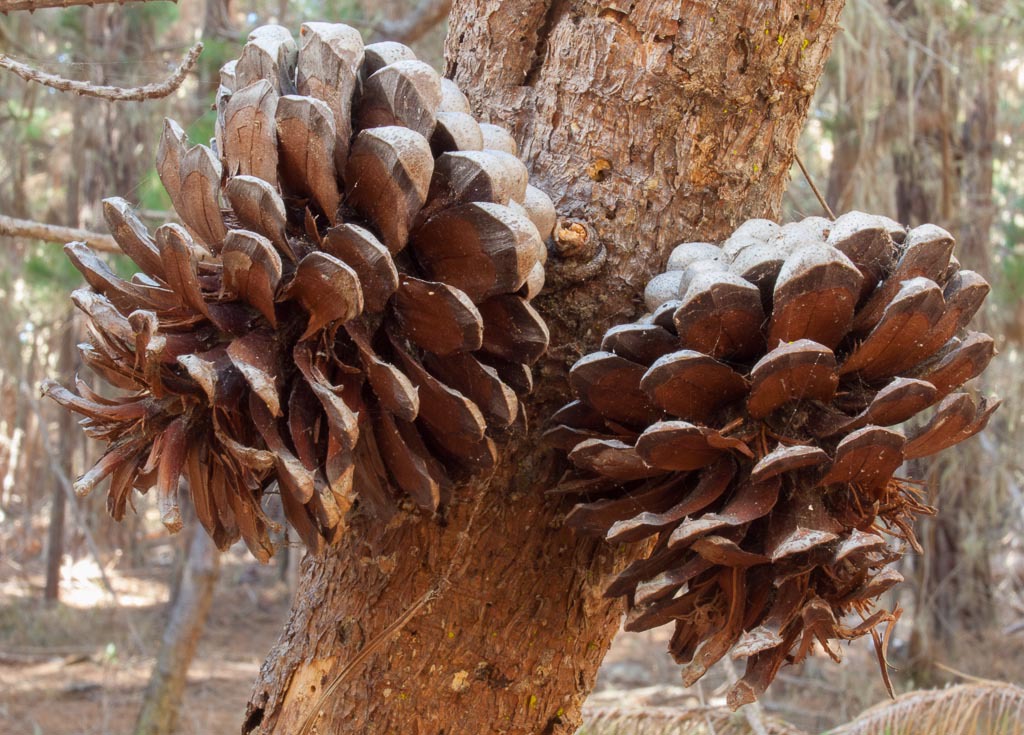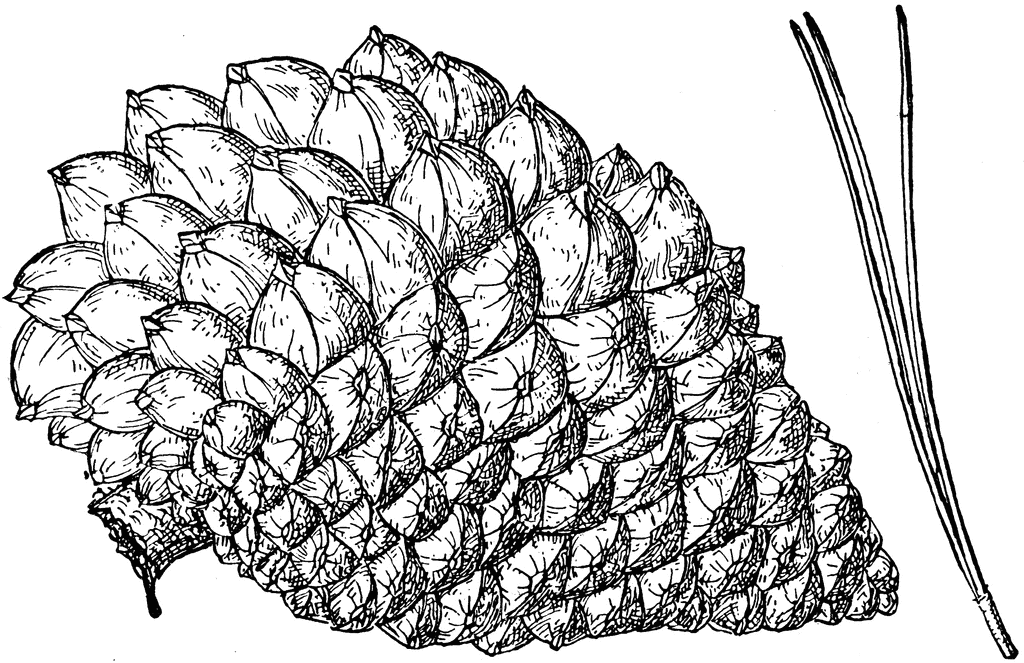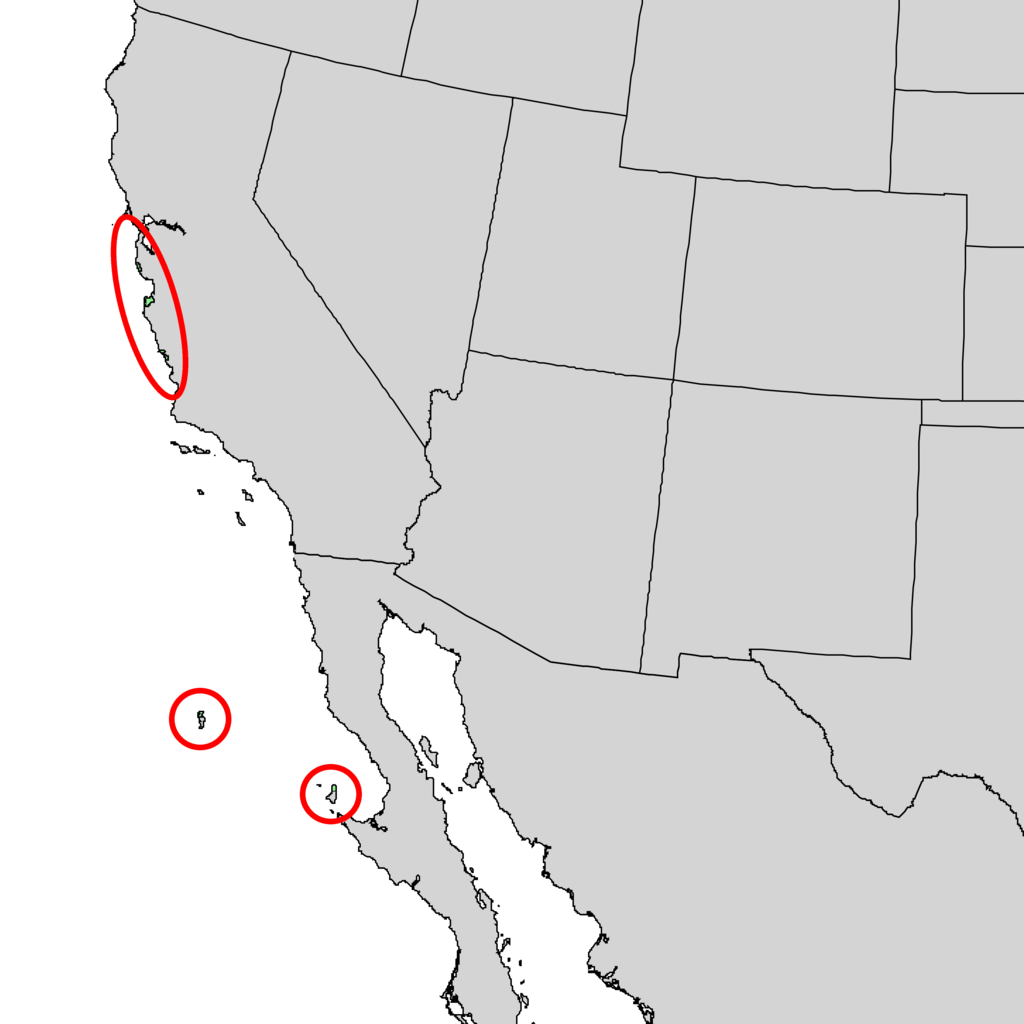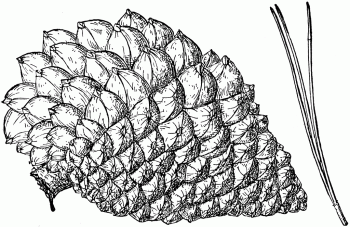
subgenus Pinus, section Trifoliae (Duhamel), subsection Attenuatae (Van Der Burgh).
Pinus radiata, as described in 1836 by David Don (1799-1841), in Transactions of the Linnean Society of London, vol. 17:442, is commonly known as Monterey pine, insignis pine, or radiata pine. The species name reflects how the mature seed cones form rings, radiating around the branches.
Ethnobotany. As timber, P. radiata is suitable for a wide variety of uses, and has a resinous fragrance while being worked. It holds screws and nails well and takes paint and stain without difficulty, and modern kiln dried timber is very easy to work. It is about 1/3 heavier than dried western red cedar. It is brittle when bent, so does not have the same load-bearing features as Douglas-fir, Pseudotsuga.
P. radiata is used in house construction as weatherboards, posts, beams or plywood, in fencing, retaining walls, for concrete formers. It is also used to a limited extent in boat building where untreated ply is sometimes used, but must be encased in epoxy resin to exclude moisture.
Description. Monterey pine is an evergreen, coniferous species of tree that grows to mature heights of 50 to 100 feet (15 - 30 m), with a contorted to straight trunk 12 to 36 inches (30 - 90 cm) in diameter, measuring at breast height; and a broadly conic crown, becoming rounded to flattened with age. Crown density is very shallow (10 to 20% of height) in closed stands.
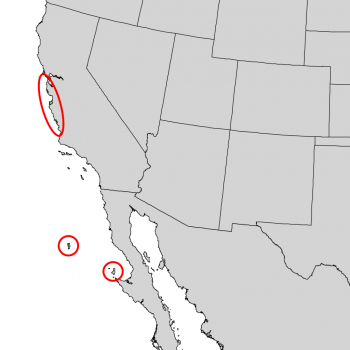
Distribution. This species is native to USA - three localities in a fog belt on the coast of central California at elevations of 100 to 1,250 feet (30 - 400 m) above sea level. The localities include one in San Mateo and Santa Cruz counties, one in Monterey County, and one in San Luis Obispo County) while variety binata is found on Islas Guadalupe and Cedros, off the west coast of Baja California Norte, Mexico, growing at 2,000 to 5,000 feet (600-1200 m) of elevation), where the trees are restricted to steep slopes at the highest elevations at the northern end of the island. On Isla Cedros, Deborah Rogers reports that "the pines occur in two main populations: inland towards the center of the island and at the northern end of the island, separated by approximately 8 miles (14 km)." Their locations on the island may be moisture limited because conditions are dry-lower elevations receiving less than 10 inches (250 mm) of precipitation annually. However, fogs and mist are common at higher elevations.
It has been introduced as a timber tree in vast areas of New Zealand (where it is the most common tree), Australia, Chile, southwestern Europe and South Africa. It has become naturalized at considered invasive in many of these places.
Hardy to USDA Zone 8 - cold hardiness limit between 10° and 20°F (-12.1° and -6.7°C).
